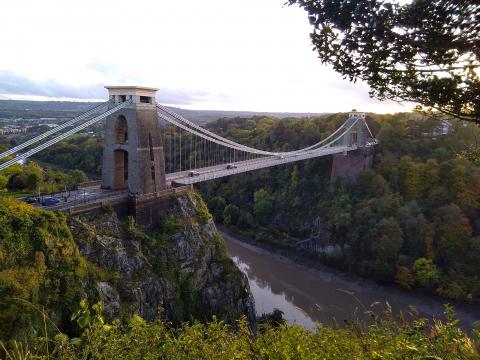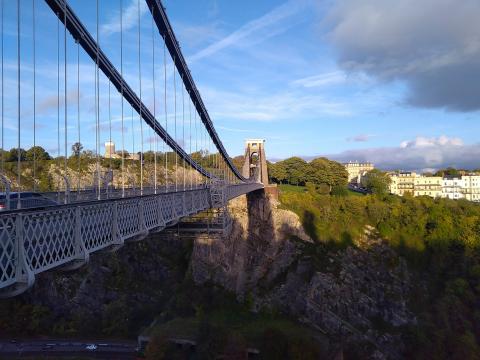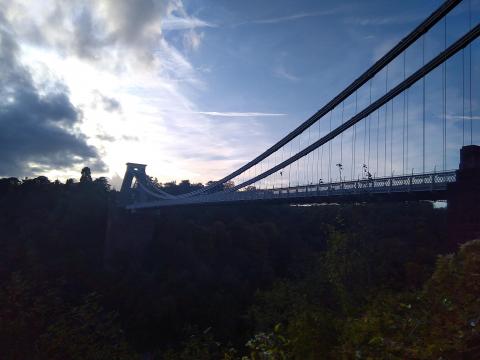Great Bridges: Clifton Suspension

Not many bridges have their own websites. Not many have their own Trusts determined to preserve and celebrate them. Not many have designers who refer to them as ‘my first child, my darling’, as Isambard Kingdom Brunel referred to this.
It took 33 years to complete, and was considered the wonder of the age. Although completed in 1864, several years after Brunel’s death, the plans were initially mooted in 1754. Construction was halted by riots in 1831; in 1843, during construction, the money ran out and further fundraising was required. It is a remarkable that it was ever built at all! The girders, chains, rods, and deck weigh about 1500 tons, and it is a truly beautiful piece of engineering. Yet its most important feature must surely be this: it works. I watched vehicles, cyclists and pedestrians use it as they returned home after work on Monday evening. No fording, swimming, ferrying or flying for them- the bridge spans the great chasm of the Avon Gorge between Bristol and North Somerset. Wishing to estimate its revenues, I counted the vehicles using it each minute (paying a pound per time) for a number of minutes, stopwatch in hand. Raising an approximate £650 per hour (which would doubtless fall during quieter times of day or night), the bridge is able to pay for its own upkeep.

There are many parallels I might draw between the Clifton Suspension and Christ’s gospel, that greater bridge between earth and heaven. Apart from its beauty, its ingenuity, its long time spent planning and the riches of its Engineer, I would simply settle for its ability to achieve its great purpose- the transporting of sinners into heaven:
“Most assuredly, I say to you, he who hears My word and believes in Him who sent Me has everlasting life, and shall not come into judgment, but has passed from death into life.” John 5:24

- Log in to post comments


 Sunday Worship 10.45am & 6.00pm
Sunday Worship 10.45am & 6.00pm